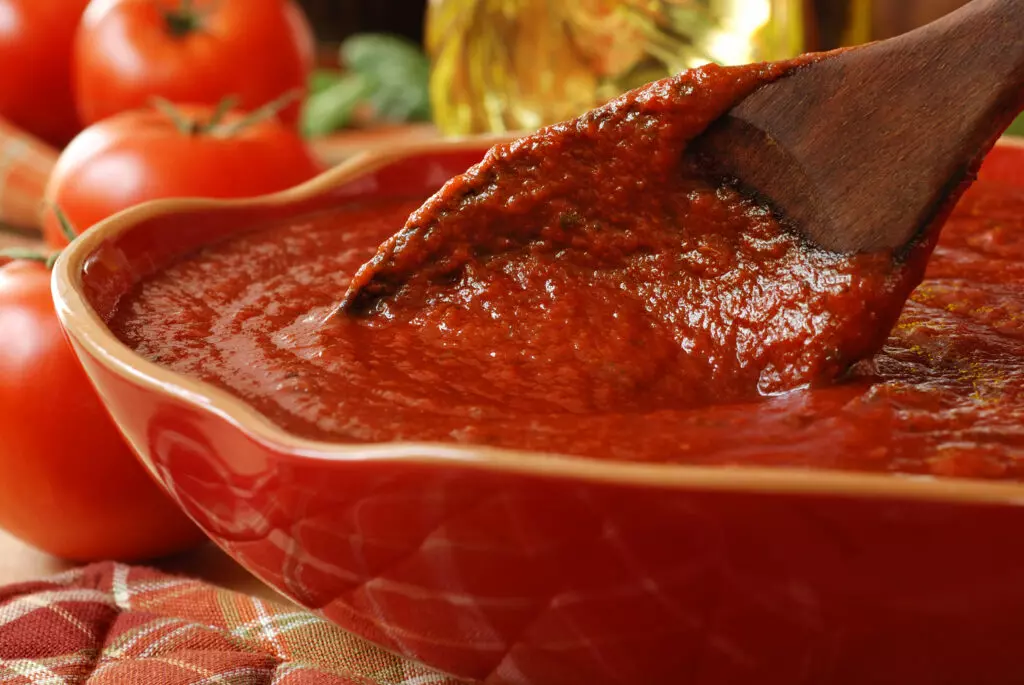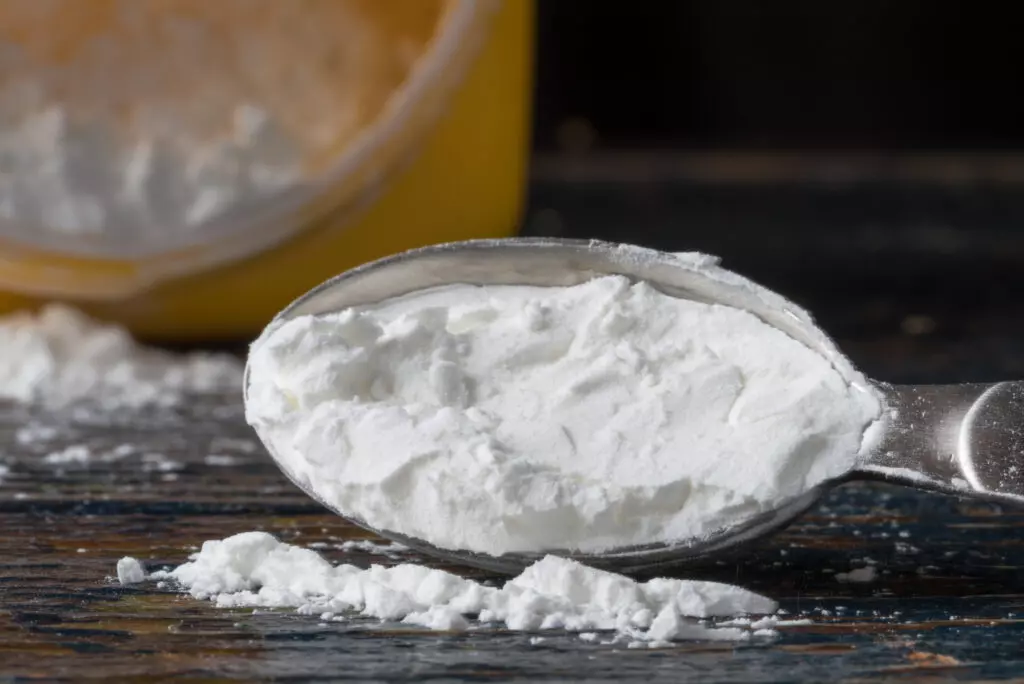When cooking spaghetti, the sauce is the star. Sauce coats the noodles and makes them burst with flavor, creating a meal to remember. Most spaghetti sauces are tomato-based so that is what we will focus on in this article. Its bright, acidic flavor can stand alone or can be combined with other ingredients.
When making your own spaghetti sauce it can be difficult to get the texture right, especially when trying a new recipe, as many tomatoes and tomato products have different levels of water. Fear not, however, as we have a few different ideas that you can use to thicken your spaghetti sauce before your guests or family even realize that anything went wrong.

Table of Contents
Eight Great Ways to Thicken Spaghetti Sauce
Here are a few different tools and ingredients that you can use to thicken your spaghetti sauce.
1. Simmer

The best way to thicken your spaghetti sauce is also the easiest—just simmer it for a little longer!
Simmering is when you cook food at a low, gentle heat. The liquid should be bubbling but not boiling completely. As dishes simmer, they release excess liquid in the form of steam. As you release the liquid, the sauce becomes thicker.
As mentioned earlier, some types of tomatoes contain more water than others. As such, some sauces need to simmer longer than others to cook out the excess water and get the sauce to a texture you are happy with. Whatever the reason, a few extra minutes simmering should do the trick.
However, make sure you stir often as tomatoes cook unevenly and can burn if left unattended too long.
2. Add Pasta Water

Pasta water is the secret ingredient for chefs cooking Italian food. When you visit a professional kitchen or an Italian nonna cooking at home, you will notice that the cook almost always reserves about a cup of pasta water before draining the pasta. Pasta water works magic on sauces, improving the flavor and the texture.
It may seem a bit counterintuitive to add more liquid to a sauce whose problem is that it is too runny. However, pasta water is no ordinary liquid. As pasta cooks, it releases starch in the water. The starch in the pasta water binds to the liquid in the tomato sauce and creates a thicker, creamier sauce.
Reserve about a cup of pasta water when you drain your pasta, but don’t pour it into the sauce all at once. Instead, add it a little at a time, until you get the texture right. It’s easier to add more pasta water than it is to take it away!
3. Add a Cornstarch Slurry

A cornstarch slurry is one of the most effective ways to thicken a sauce and will help with even the runniest of sauces. Cornstarch is a fine white powder made from ground-up corn. It has even more starch than flour, which is what makes it so effective. Starch is a compound that binds to liquid when you add it to a sauce causing it to thicken.
The best way to add cornstarch to a dish is to make a slurry. Mix together one tablespoon of cornstarch with two of water until all the clumps are dissolved, then stir that into the sauce. Bring the sauce to a boil, then let the cornstarch work its magic. Like the pasta water, I would add small amounts at a time until you have the texture just right.
4. Tomato Paste

Tomato paste is a concentrated form of tomato that forms when tomatoes are cooked down for several hours. It is a thick, bright red paste that has concentrated tomato flavor. You can get it in a tube or a can.
If you notice that your tomato sauce is becoming too thin, add a generous amount of tomato paste. Allow the tomato paste to darken before stirring it through the sauce.
5. Add Ground Beef or Sausage

If you want to add a savory flavor and hearty texture to your sauce, try adding either ground beef or sausage. These meats contain a decent amount of fat that helps to thicken sauces. In addition, adding these meats will give a good dose of protein to your sauce.
For this method, cook the meat separately and drain excess fat before adding to the sauce.
One thing to keep in mind however, is that adding meat will significantly change the flavor of your sauce more than the other options listed in this article. While many people like the meaty flavor, it may not be the best option for someone following a specific sauce recipe that is not meant to have meat.
6. Egg Yolks

Egg yolks are a surprisingly effective way of thickening different pasta sauces, from Alfredo to marinara. Yolks are high in protein and have a thick, gelatinous texture, making them a great thickener that will give your sauce a creamier texture.
Egg yolks create a glossier, richer sauce. Plus, the additional protein makes the sauce more filling.
However, you have to be careful when adding egg yolks to pasta sauce. It requires a very precise technique as the heat from the sauce could scramble the eggs. First, bring the egg yolks to room temperature. Then, add a small amount of hot water or sauce to room temperature eggs to allow them to adjust to the heat before tossing them into the pot. Stir well once the eggs are added to the pot.
7. Roux

A roux is a combination of fat and flour that yields thick, glossy sauces. Usually, people use a roux as the starting point for a sauce, but you can also use it to thicken a sauce that isn’t cooperating.
Roux is very effective at thickening sauces because it contains flour, which is high in starch. The fat in the roux evenly distributes the starch throughout the sauce, allowing it to be even more effective. Plus, the roux cooks down your flour, preventing the raw flour flavor from overwhelming your sauce.
To make a roux, melt butter in a hot pan. Then, add an equal amount of flour and whisk over medium heat for about five minutes until it forms a paste that has a creamy color. Add the roux to your sauce and let it simmer. I would start with about a tablespoon at a time and continue to add as needed stirring as you add.
It you would like to keep your sauce gluten-free, I would make use 1 to 1 gluten-free flour in your roux.
8. Mashed Potatoes

Mashed potatoes are definitely an unconventional way to thicken spaghetti sauce, but they work! The starch in potatoes absorbs the liquid in the sauce, making the sauce thicker. Plus, mashed potatoes are the right texture that they will stir into the sauce smoothly without adding clumps.
However, this hack only works if you already have leftover mashed potatoes. If you would need to make mashed potatoes from scratch, making a roux or a slurry is a far more efficient way to thicken sauce.
Frequently Asked Questions
Is Roux gluten-free?
While roux typically contains gluten as it uses flour, it can be made gluten-free simply by substituting your flour with a 1 to 1 gluten-free flour.
What is the Easiest Way to Thicken Runny Spaghetti Sauce?
In my opinion, adding a cornstarch slurry is the quickest and easiest way to thicken spaghetti sauce as the starch in the cornstarch binds to the moisture in the sauce. Though, be sure to mix the cornstarch with water to make a slurry prior to adding to the sauce. I would then add small amounts at a time until you get the texture right.
Final Thoughts on How to Thicken Spaghetti Sauce
If you find yourself stuck with runnier sauce than you’d like, you luckily have lots of options at your disposal. With easy ingredients you likely have on hand and a little patience, you can get your sauce to the right texture in no time. Happy cooking!
Also Check out the following articles:
How to Thicken Alfredo Sauce: 12 Great Ways
Sashimi vs. Sushi: What’s the Difference?
Also, subscribe to our YouTube Channel for some great videos!
